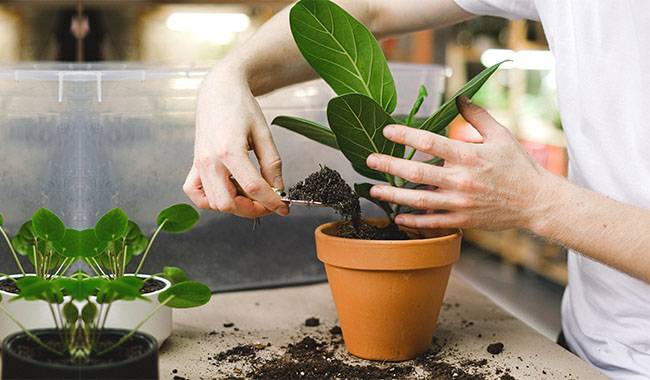
Most often, as houseplants, we grow oval-shaped golden roots of golden oranges. Not only can you buy healthy and tasty citrus fruits, but you can also grow them at home! In this article with thumbgarden.com let’s see what is needed for kumquat to bloom at home and how to care for it.
What Are the Conditions Needed to Grow Kumquat Indoors?
Bring it to the garden or on a log cabin with sunlight. The pot can be buried in the soil to prevent the roots from overheating.
A. Planting kumquat in summer
He likes it very warm in summer – up to 77-86 °F (25- 30 ° C). It is a good idea to bring it to the garden or cool porch in the summer to provide diffuse sunlight. To keep the roots from overheating, you can dig the pot into the soil.
B. Planting kumquat in winter
In winter, kumquat prefers relatively cool conditions of 50-59 °F (10-15°C).) If this temperature cannot be maintained, kumquat should receive supplemental light in the fall and as much light as possible in the winter. During cold periods, check the temperature of the windowsill from time to time. This can vary greatly from the room temperature, and large differences in these values will cause the leaves to turn yellow and fall off.
C. Humidity for growing kumquat
Like all citrus fruits, kumquat likes fairly humid air. Otherwise, it starts to drop its leaves and is attacked by red spiders and mesquite. Regular spraying does not solve the problem. Install a bowl of water nearby, or better yet, an automatic humidification system.
Keep the earth in a moderately moist state and avoid standing water or drying out. If the plant is in a small pot, water when the topsoil is dry.
Water large kumquat specimens in large containers after the soil has dried to a depth of at least 2-3 inches (5-7.5 cm). The water is used by letting it stand at room temperature. If the water is hard, add 1/4 teaspoon to 2.11 gals (8 l) plastic bucket. Oxalic acid: Excess magnesium and calcium salts will precipitate on the bottom and walls of the container. You can use it after one day.
D. Fertilizer kumquat
During the dormant period – from mid-October to February – plants do not feed. During the growing period – from March to the end of September – they “feed” at least once a month (more often in spring and the first half of summer, slightly increasing the nitrogen content, and at the end of the growing season – less often and reducing the amount of nitrogen). Ideally, mineral fertilizers do not contain chlorine. Regular organic fertilization is also needed. Both alternate.
To simplify the work of raising kumquat, so-called long-lasting fertilizer sticks are used. Fertilizer sticks are placed in the pots only at the time of transplanting, along the periphery of the pots.
Transplanting kumquat
Repotting of mature plants, especially fruit-bearing plants, is done every two or three years at the end of February or the beginning of March. When the size of the pot starts to be significantly smaller than the size of the canopy, young plants should be replanted as needed.
It is best to use the transplanting method, which means that the roots are not removed from the substrate and the soil is retained as much as possible. The top layer of soil should be gently replaced.
You can use a ready-made citrus soil mixture or make your own from sod soil, fertile garden soil, well-decomposed manure or leafy mulch, and coarse sand or vermiculite (2:1:1:1). Flushed expanded clay or gravel is suitable as a drainage system. The latter is heavier and makes the pot more stable.
Water the transplanted trees heavily and leave them in a moderately warm place for a few weeks, occasionally spraying the canopy with warm water.
Pruning and Shaping the Kumquat Canopy
To achieve an even canopy, plants are slowly (every 10 to 11 days old) rotated around their axis – kumquat does not like to turn sharply relative to a light source. This should also be taken into account when transplanting. Place a ribbon in front of the plant, report it and place it in the same pot. Otherwise, this will cause most of the leaves to fall off suddenly.
Cuttings kumquat
kumquat can be propagated by grafting, scions, cuttings, and seeds. The last method is the easiest, but you must wait more than 7 to 8 years for the fruits. In addition, the offspring may not retain their varietal characteristics.







